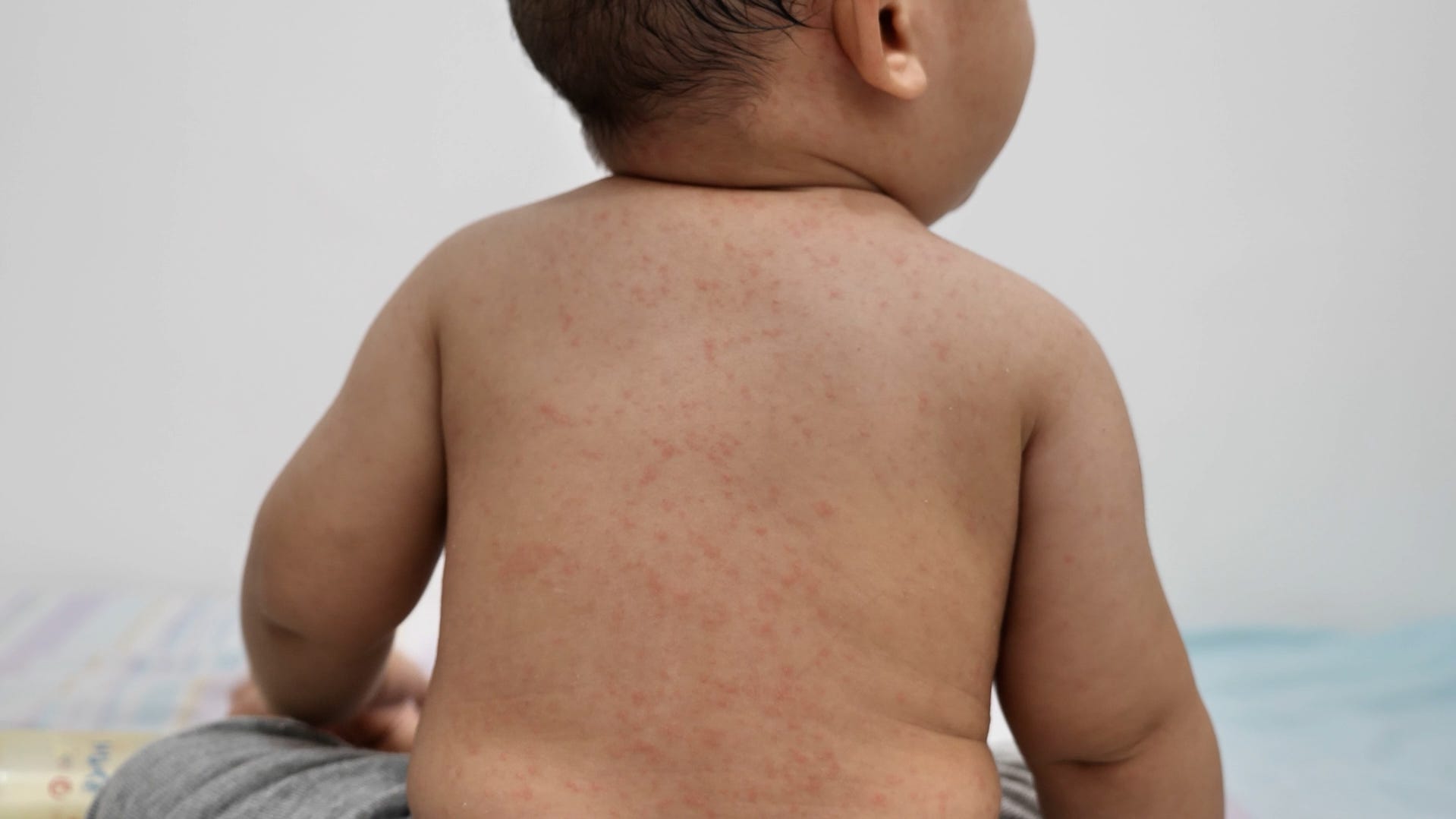Measles outbreaks pose a threat to travelers in the US, Europe: What to know

- Measles cases are increasing in the U.S. and abroad, with unvaccinated individuals making up the majority of cases.
- The CDC recommends travelers be fully vaccinated with the MMR vaccine at least two weeks before international travel.
- Travelers should monitor for symptoms for three weeks after returning from international travel or areas with outbreaks.
As measles cases continue to rise in the U.S. and abroad, travelers may be concerned about visiting destinations with ongoing outbreaks.
There have been 483 confirmed cases reported so far this year by more than a dozen states including California, Florida, Ohio and Vermont, with the highest numbers concentrated in Texas, New Mexico and Kansas, according to the Centers for Disease Control and Prevention. Those numbers have already surpassed the total cases in all of 2024.
Ninety-seven percent of those 2025 cases have occurred in people who are unvaccinated or whose vaccination status is unknown, the CDC said.
Europe has also grappled with the illness, with the region reporting its highest case numbers in over 25 years for 2024, according to a recent World Health Organization and United Nations Children’s Fund (UNICEF) analysis. Here’s what travelers should know.
How does measles spread?
Measles is “highly contagious” and can spread from person to person when someone who is infected coughs or sneezes, the CDC said. People can also get sick by breathing contaminated air – where it can live for two hours – or touching their mouth, eyes or nose after contact with a contaminated surface.
International travel is a source of measles cases, according to the health agency. “The disease is brought into the United States by unvaccinated people who get infected in other countries,” the CDC said on its website. “Typically, 2 out of 3 of these unvaccinated travelers are Americans. They can spread measles to other people who are not protected against measles, which sometimes leads to outbreaks.”
Dr. Stephen S. Morse, a professor of epidemiology at Columbia University’s Mailman School of Public Health, said whether or not travelers should be concerned depends on if “they already have some, what the CDC would call presumptive evidence of immunity … or if they're going to an area where there is a fairly high measles risk.”
How can I protect myself from measles while traveling?
When visiting a destination where the virus is spreading, the CDC said travelers who are not fully vaccinated or have not had measles are at risk of infection.
The health agency recommends travelers be fully vaccinated with the measles, mumps and rubella (MMR) vaccine two weeks or more before leaving for an international trip. Two doses offer 97% protection against measles.
For those traveling sooner, the health agency advised still getting one dose, which provides 93% protection. Travelers can find full vaccination recommendations based on age on the CDC’s website.
The WHO similarly recommended earlier this month that international travelers “check and update their vaccination status against measles prior to departure, including when planning to travel to the United States.”
While vaccinated travelers may not need a booster, Morse said travelers could consider it depending on where they are going.
“That's pretty much optional,” he said. “But if I were a traveler going to a place like the Philippines, or parts of Africa or other places where there is a lot of measles going around and I had been immunized 20 years ago when I was in school or something, I would consider that along with the other travel vaccinations that travelers usually get.” There are also lab tests that can detect antibodies in the blood.
The vaccine is the most effective method of prevention, but Morse also noted it's a good idea to wash your hands and avoid contact with anyone who has a rash. Masks may also be helpful, as he said most transmission happens through “the respiratory route.”
What else should travelers know?
The CDC maintains a list of countries experiencing high transmission, which travelers can reference ahead of time. In a health advisory for travelers and health care providers earlier this month, the agency recommended monitoring for symptoms for three weeks after an international trip or traveling domestically to an area with an ongoing outbreak.
“If you or your child gets sick with a rash and a high fever, call your healthcare provider,” the alert said.
Nathan Diller is a consumer travel reporter for Paste BN based in Nashville. You can reach him at ndiller@usatoday.com.